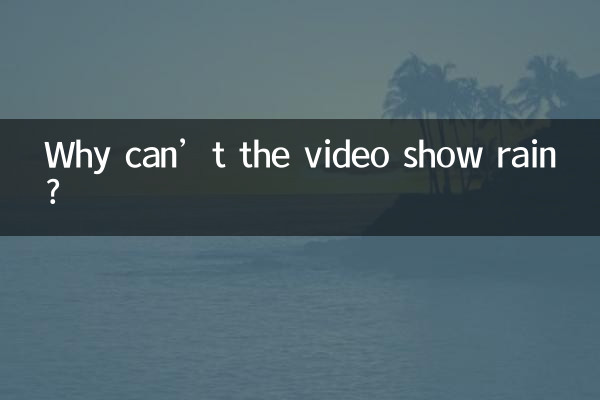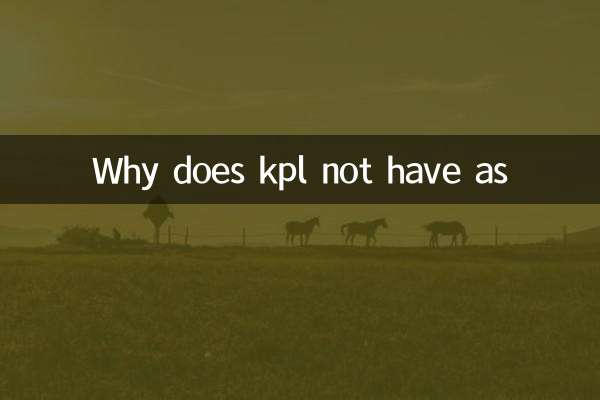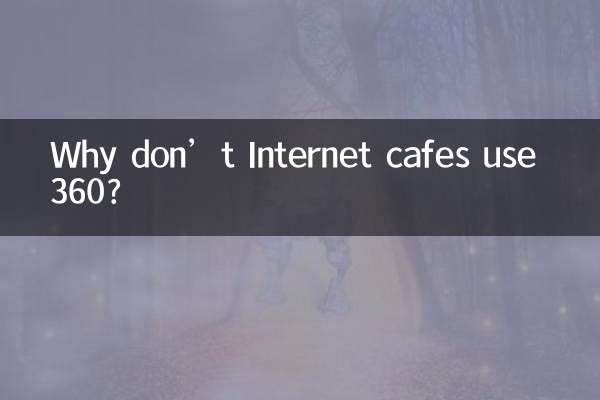Title: Why can’t the video show rain? ——Visual dilemma from technology to art
In short videos and film and television creations, rain scenes are a common atmosphere-creating element, but many viewers find that the rain in videos often lacks realism. Why can't the camera capture the texture of rain even though it's raining? This article combines the data analysis of hot topics on the Internet in the past 10 days to break down this phenomenon for you from the three dimensions of technology, equipment and artistic expression.
1. Topic data related to "Rainscape Photography" are hotly discussed across the Internet

| platform | Topic keywords | Number of discussions (10,000) | Core pain points |
|---|---|---|---|
| Tik Tok | #Why can’t I shoot the rain? | 12.3 | Blurred rain in mobile phone photos |
| # film and television drama fake rain | 8.7 | Special effects rain lacks layering | |
| Station B | #rainscapephotographytutorial | 5.2 | Professional equipment parameter settings |
| little red book | #cinematic rainy day color grading | 3.9 | Difficulty in post-production color restoration |
2. Technical Limitations: Collision between Hardware and Physics
1.shutter speed trap: The default shutter speed of ordinary mobile phones is about 1/100 second, but the falling speed of raindrops reaches 9 meters/second, causing the raindrops to turn into short lines when shooting. Professional film and television-level shooting requires a shutter speed of 1/500 seconds or more to solidify the shape of raindrops.
2.Sensor size differences: The area of the CMOS sensor of a mobile phone (approximately 1/2.3 inches) is more than 20 times different from the full-frame sensor of a movie camera (36×24mm), and the ability to capture raindrops in weak light is very different.
3.Insufficient dynamic range: The light ratio of scenes in rainy days usually exceeds 10 stops, and ordinary equipment can only record 7-8 stops of dynamic range, resulting in overexposure of bright parts or blackness of dark parts.
| Device type | ideal shutter speed | Minimum illumination (Lux) | Dynamic range (stops) |
|---|---|---|---|
| Smartphone | 1/1000s | 5 | 7.5 |
| mirrorless camera | 1/2000s | 1 | 12 |
| movie camera | 1/4000s | 0.5 | 16+ |
3. Artistic expression: balance between reality and aesthetics
1.visual reinforcement paradox: Less than 5% of raindrops are visible to the naked eye in a real rain scene, while film and television creations require more than 30% visibility to create a dramatic effect, leading to excessive use of artificial rainfall.
2.Color science clashes: The actual color temperature on rainy days is about 7500K, but the "movie-like rain scene" perceived by the audience often needs to be adjusted to a warm tone of about 6000K, resulting in authenticity deviation.
3.lack of sound shaping: The spectrum of rain sounds in film and television works is usually concentrated at 2-5kHz, while the bandwidth of real rain sounds is 20Hz-15kHz. The lack of low frequencies will make the picture look thin.
4. Solution: Optimization of the entire process from shooting to post-production
1.Pre-shooting tips: The backlight shooting angle can make the raindrops produce refracted light; add foreground objects as reference objects; use black flags to block some areas to increase contrast.
2.Special equipment configuration: High-speed synchronized flash (up to 1/8000s); polarizing filter to eliminate reflections; large-aperture telephoto lens to compress the sense of space.
3.Later enhancement plan: DaVinci Resolve’s rain tracking function; After Effects’ particle system; Nuke’s 3D depth synthesis.
| Film and television works | Rainscape technology | Shooting days | Later costs (10,000) |
|---|---|---|---|
| "Blade Runner 2049" | Artificial rainfall + CG enhancement | 17 | 320 |
| "Parasite" | Real heavy rain + special effects | 9 | 150 |
| "Weathering with You" | Full CG rendering | - | 800+ |
Conclusion:The essence of photographing rain scenes is optical magic, which requires creative solutions that break through the limitations of hardware. With the development of computational photography technology, the ability of mobile phones to shoot rain scenes is improving - Huawei P60 Pro's "Rainy Night Mode" can reconstruct the shape of raindrops through AI algorithms. Perhaps in the near future, everyone will be able to take movie-level rain scenes easily.

check the details

check the details